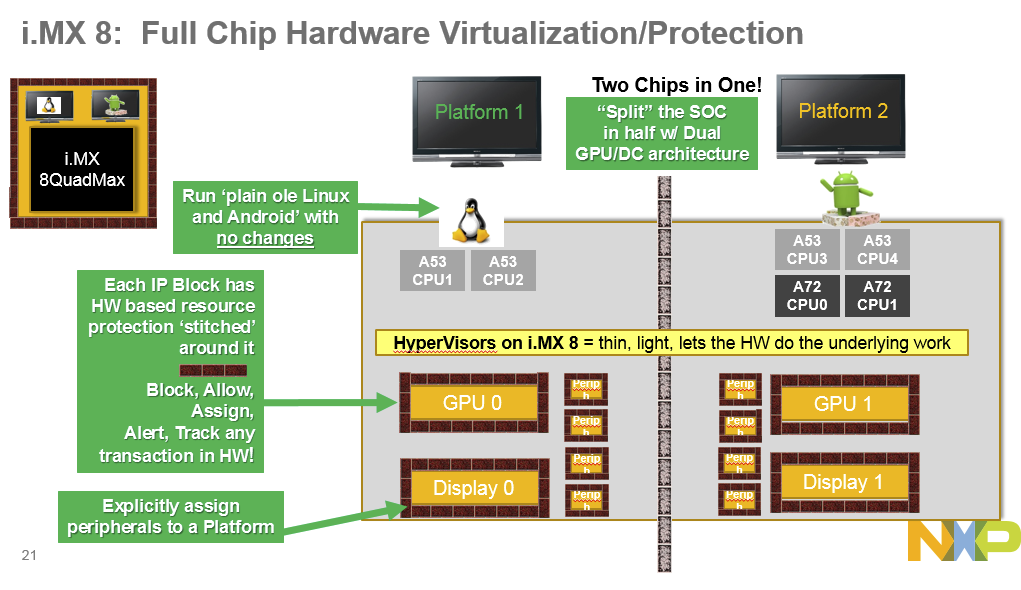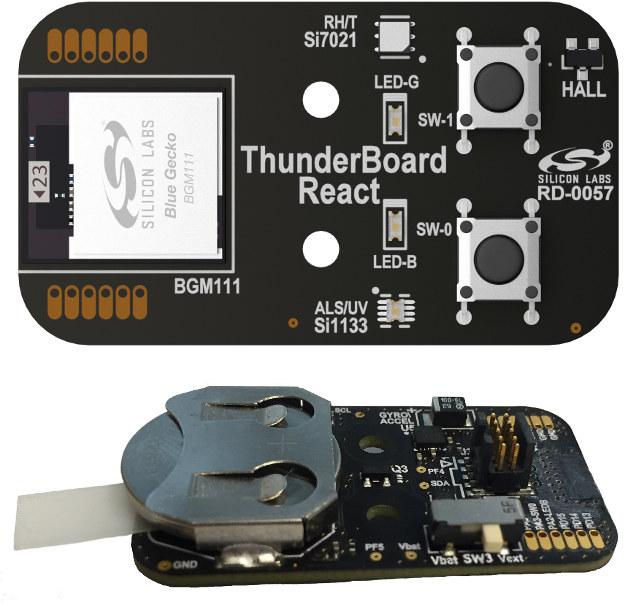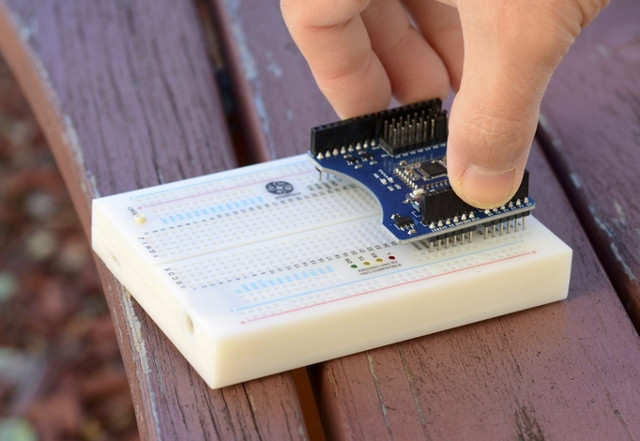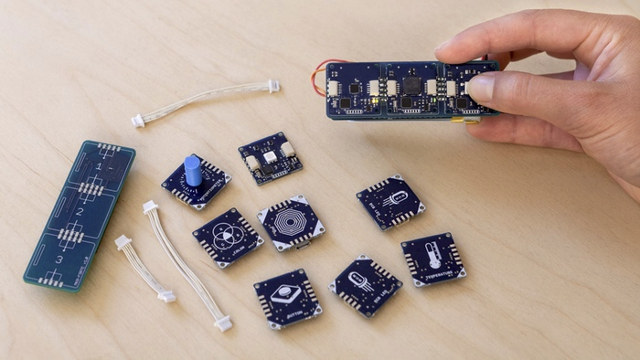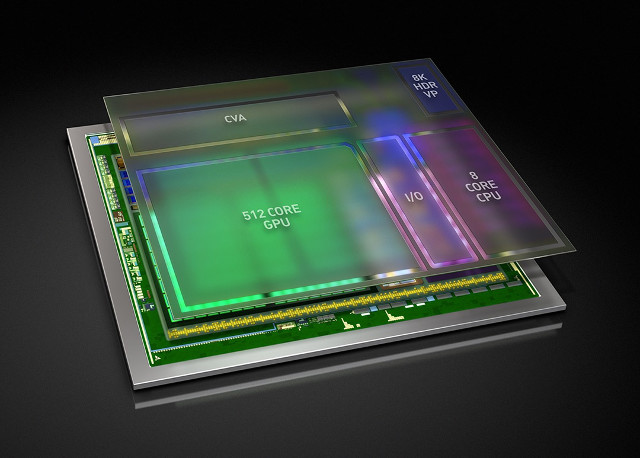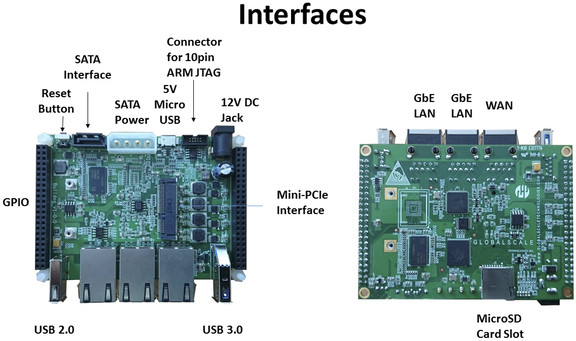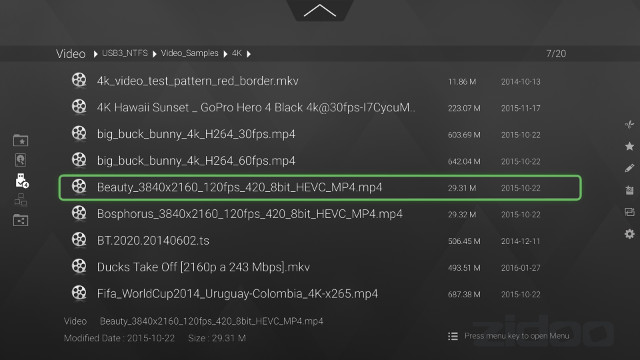Freescale and then NXP have been talking about i.MX8 processors for several years, and this spring unveiled i.MX 8 Multisensory Enablement Kit without giving much details about the processor except it would include both Cortex A72 & A53 cores. But NXP put out a press release yesterday about “Multisensory Automotive eCockpit Platform to Advance Multimedia Experiences in Future Cars” which appears to be the same news but with different words, except the content of the PR has more interesting bits such as: The new family, which is based on up to six 64-bit ARMv8-A technology processor cores and includes a HiFi 4 DSP, LPDDR4 and DDR4 memory support as well as dual Gigabit Ethernet with audio video bridging (AVB) capability, is designed to advance automotive dashboard graphics such as instrument clusters, infotainment visuals, heads-up displays, rear-seat screens and more. Capable of driving four HD screens with independent content or a […]
Google Announces Pixel and Pixel XL Smartphones for $649 and Up
Google used to collaborate with smartphone manufacturers for their Nexus devices, but the company is now promoting their own Pixel brand, and has just launched Pixel and Pixel XL smartphones powered by Qualcomm Snapdragon 821 processor, and running Android 7.0 Nougat operating system. Both smartphones share most of the same specifications, but XL has a larger screen, a bigger battery, and a higher price tag: SoC – Qualcomm Snapdragon 821 (MSM8996 pro AB) Quad core Kryo processor with two cores at up to 2.15GHz, two cores at up to 1.6GHz, Adreno 530 GPU System Memory – 4GB LPDDR4 Storage – 32 or 128 GB storage Display Pixel – 5.0″ FHD (1920×1080) AMOLED display; 2.5D Corning Gorilla Glass 4 Pixel XL – 5.5″ QHD (2560×1440) AMOLED display; 2.5D Corning Gorilla Glass 4 Camera 12.3 MP rear camera (IMX378 sensor) with laser and phase detection auto focus (LDAF + PDAF), f/2.0 aperture […]
Silicon Labs Introduces $29 Thunderboard React Bluetooth 4.2 LE IoT Board and $69 Derby Car Kit
Earlier this summer, Silicon labs launched ThunderBoard React, a Bluetooth 4.2 LE compliant board with sensors and expansion headers for IoT applications based on the company’s BGM111 Bluetooth Smart Module, and to make it much more fun to work with the company has released a Derby Car kit controlled by the board. ThunderBoard React specifications: Bluetooth Module – BGM111 Bluetooth 4.2 compliant module with integrated Tx and Rx antenna, and Cortex M4 MCU @ 38.4 MHz with 32 kB RAM and 256 kB Flash Extra Storage – Footprint for 8Mb external flash storage Sensors – Si7021 relative humidity and temperature, Si1133 UV index and ambient light sensor, Invensense MPU-6500 6-axis gyro/accelerometer, Si7201 hall effect position sensor Expansion – 12 breakout pina to connect to BGM111 GPIOs Debugging – 10-pin mini Simplicity debug connector Misc – 2x momentary buttons, 2x LEDs, power selection switch Power Supply – CR2032 coin cell battery […]
Meet STEMTera Smart Breadboard with Built-in Arduino Board, and LEGO Compatibility (Crowdfunding)
From time to time, you see new products on the market with an idea that – in hindsights – seems to simple and obvious that it makes you wonder why you or others had not thought about it a long time ago. Most people will use an Arduino board with a breadboard for their project, so it makes perfect sense to combine both into a single product, and that’s exactly what STEMTera has done, when they designed a breadboard containing an Arduino compatible board, supporting Arduino UNO R3 shields, and usable with LEGO bricks. STEMTera breadboard specifications: MCU (Arduino) – Microchip/Atmel ATmega328P-AU MCU @ 16 MHz with 2KB SRAM, 32KB flash, and 1KB EEPROM MCU (USB-to-TTL) – Microchip/Atmel ATmega16U2 MCU @ 16 MHz with 512 bytes SRAM, 16KB flash, and 512 bytes EEPROM Expansion Arduino MCU – 14 digital I/Os (including 6 PWM), 6x analog input; 5V I/Os; DC current […]
Arduino Has Launched ESLOV IoT Invention Kit on Kickstarter
Arduino LLC has just launched its very first Kickstater campaign with ESLOV IoT Invention Kit combines a WiFI board and modules, a visual code editor, and Arduino Cloud. The goal of the project is to let people connect devices to the cloud without needing any programming skills, although the Arduino IDE can still be used for more advanced users. The brain of the project is ESLOV Wireless & Motion Hub: MCU – Microchip (previously Atmel) SAMD21 ARM Cortex-M0+ micro-controller @ 48 MHz with 32KB RAM, 256 KB flash Connectivity – Wi-Fi 802.11 b/g/n USB – 1x micro USB port for programming and power Sensor – One motion sensor Expansion – 5-pin ESLOV connector based on I2C protocol plus a multifunction pin for wakeup, IRQ, and discovery The ESLOV hub would then connect to tiny (2.5 x 2.5cm) ESLOV modules based on Atmega ATmega328P MCU, and communicating through the ESLOV protocol. […]
Nvidia Unveils Xavier Automotive & AI Octa-core SoC with 512-Core Volta GPU, 8K Video Decode & Encode
Nvidia has introduced the successor to their Parker SoC mostly targeting self-driving cars and artificial intelligence applications, with Xavier SoC featuring 8 custom ARMv8 cores, a 512-core Volta GPU, a VPU (Video Processing Unit) supporting 8K video decode and encode and HDR (High Dynamic Range), as well as a computer vision accelerator (CVA). The processor will deliver 20 TOPS (trillion operations per second) of performance, while consuming only 20 watts of power, and since it’s designed specifically for autonomous cars, it will comply with automotive safety standards such as ISO 26262 functional safety specification. Anandtech published a comparison table with Tegra X1 (Erista), Parker, and Xavier using currently available information. Xavier Parker Erista (Tegra X1) CPU 8x NVIDIA Custom ARM 2x NVIDIA Denver + 4x ARM Cortex-A57 4x ARM Cortex-A57 + 4x ARM Cortex-A53 GPU Volta, 512 CUDA Cores Pascal, 256 CUDA Cores Maxwell, 256 CUDA Cores Memory ? LPDDR4, […]
Marvell ESPRESSOBin Board with Gigabit Ethernet, SATA, mini PCIe, and USB 3.0 To Launch for $39 and Up (Crowdfunding)
I can often read people hoping for an inexpensive community board for network, storage and connectivity applications with high speed interface like SATA, multiple Gigabit Ethernet port, USB 3.0 and/or mini PCIe, and that’s exactly what Globalscale Technologies is about to offer with their Marvell ARMADA 3700 based ESPRESSOBin development board to go for $39 and up via Kickstarter. Marvell ESPRESSOBin board specifications: SoC – Marvell Armada 3700LP (88F3720) dual core ARM Cortex A53 processor up to 1.2GHz System Memory – 512MB DDR3 or optional 1GB DDR3 Storage – 1x SATA interface, 1x micro SD card slot with footprint for an optional 4GB EMMC Network Connectivity 1x Topaz Networking Switch 2x GbE Ethernet LAN 1x Ethernet WAN 1x MiniPCIe slot for Wireless/BLE periphereals USB – 1x USB 3.0, 1x USB 2.0, 1x micro USB port Expansion – 2x 46-pin GPIO headers for accessories and shields with I2C, GPIOs, PWM, UART, […]
4K Video Playback and HDMI Audio Passthrough in Realtek RTD1295 based Zidoo X9S TV Box
Zidoo X9S is a high-end 4K TV box and HDMI recorder based on Realtek RTD1295 processor. I’ve already checked its hardware, and run some benchmarks, so after a successful OTA firmware update, I decided to test 4K videos and HDMI audio pass-through capabilities of the device with ZDMC, Zidoo’s fork of Kodi 16.1, and “Media Center” internal player. Before starting playing 4K videos and testing HDMI audio pass-through, you’ll want to make sure to configure video output to a 4K UHD resolution and framerate such as 3840×2160 @ 60 Hz, as well as change HDMI output audio in Sound & notification settings. The options are a little different from the other boxes as beside RAW and 2-channel LPCM, Zidoo X9S also supports multi-channel LPCM. In order to test HDMI audio pass-through, it must be set to RAW. You may also want to check Playback options to switch to 24 Hz […]


